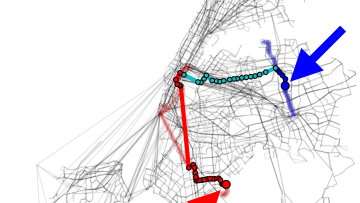14:30
Kerdock matrices and the efficient quantization of subsampled measurements
Abstract
Kerdock matrices are an attractive choice as deterministic measurement matrices for compressive sensing. I'll explain how Kerdock matrices are constructed, and then show how they can be adapted to one particular strategy for quantizing measurements, in which measurements exceeding the desired dynamic range are rejected.
The Riemann zeta function, quantum chaos and random matrices
Abstract
Outer Automorphisms of Hyperbolic Groups
Abstract
I will talk about a remarkable theorem by Paulin, which says
that if a one-ended hyperbolic group has infinite outer automorphism
group, then it splits over a two-ended subgroup. In particular, this
gives a condition which ensures a hyperbolic group doesn't have property
(T).
Galois Characterization of Henselian Fields
Abstract
I will talk about Jochen’s theorem about the existence of some non-trivial Henselian valuation given by investigating the absolute Galois group.
16:30
Torelli and Borel-Tits theorems via trichotomy
Abstract
Using the "trichotomy principle" by Boris Zilber I will give model theoretic proofs of appropriate versions of Torelli theorem and Borel-Tits theorem. The first one has interesting applications to anabelian geometry, I won't assume any prior knowledge in model theory.
Many of us know the feeling of standing in front of a subway map in a strange city, baffled by the multi-coloured web staring back at us and seemingly unable to plot a route from point A to point B. Now, a team of physicists and mathematicians has attempted to quantify this confusion and find out whether there is a point at which navigating a route through a complex urban transport system exceeds our cognitive limits.
Extended QFT in Euclidean and Minkowskian signatures
Abstract
I'll explain the formalism of extended QFT, while
focusing on the cases of two dimensional conformal field theories,
and three dimensional topological field theories.



